Interview: Star Trek Online Lead Designer Al Rivera
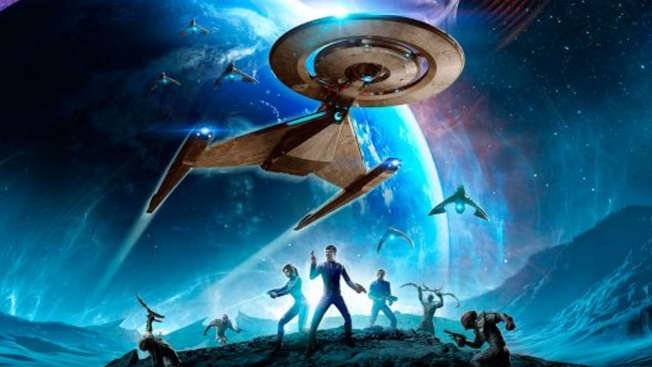
Earlier this month, Cryptic Studios released the Awakening update for Star Trek Online. The update brings the game's story back into the present where players must still contend with J'Ula and defend the Mycelial Network.
Prior to the update's launch, Cryptic offered us a chance to ask a few questions of the game's lead designer Al Rivera and get a little insight into what goes into creating one of these updates and we shuttled a few questions over to them.
Before we begin, I should probably note that we'd initially intended for this post to go up around the time Awakening launched, but Mike's email had different ideas and shuffled the answers off to spam -- to only be noticed later. But, we still wanted to share it with you.
MMOBomb: Tell us a bit about yourself, how you came to be the lead designer for STO and what that job entails.
Al Rivera: Well, that’s a long story. I’ve been in the video game industry since 1997, so about 22 years now. I’ve been at Cryptic Studios since 2003 (coming up on 17 years). I started as one of the leads on City of Heroes, then I moved to Champions Online for a while. During my work on Champions, Cryptic secured the rights for Star Trek Online, and I was given the opportunity to be the lead designer on that project, which, being a huge Star Trek fan, I was absolutely ecstatic about.
As the lead designer, I work with other leads and the game’s executive producer, Andre Emerson, to determine the business goals and needs of the game. From those goals, we build a release plan that may go out for a year and then we execute on that. The design team reports to me, which includes systems designers, content designers, and writers. Basically I oversee story, missions, cut scenes, events, items, NPCs/baddies, boss fights, ships, player powers, etc… all things “design.” I don’t build the content or assets -- the team does. I simply set goals and expectations, then review and guide what they create. We all work particularly closely with the art team to bring the game to life.
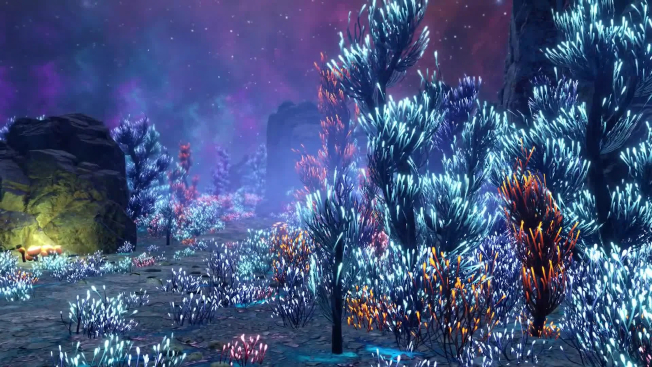
MMOB: On September 10, the new Awakening update came out. How long had that been in production, and what were your goals with it?
AR: The planning spanned several months, but we spent about 3-4 months of actual development time on Awakening. That is pretty typical for a standard update. The first goal was to continue the story arc. We have been laying the groundwork for this story arc since Age of Discovery launched in October 2018 and now we are moving out of the 23rd century and back to Star Trek Online’s original time period. Awakening really kickstarts the story as it moves forward into next year.
We also wanted to make Awakening feel more like an event. That led us to re-imagining our entire Event System, as well as our Patrols. Together, the new episode, the new Task Force Operation, and the new Patrols form the Mycelium Event. The Mycelium Event, featuring Anthony Rapp as Paul Stamets, establishes this huge backstory of a new threat to the universe.
MMOB: What’s it been like working to bring STO and the Discovery universe together?
AR: Honestly it’s been exciting and it’s been an honor. Discovery brought a ton of new characters, stories, ships, and worlds. It’s kind of like opening your toys on Christmas. We get a lot of the story and art assets early from CBS so we can play with them. Then we have the opportunity to see them all in action on-screen. You look at all these interesting characters, lore and assets, and the creative gears start turning – “Ooh what’s that?” “How can we use that location?” “How can we build that ship?” “Can we get that actor?” “Can we tell that story?” There is so much to leverage, it will keep us busy for years.
The cast has been amazing to work with. The Discovery actors are still filming, so it’s super fresh in their minds and they really care about their characters. They bring a lot of energy to the recording sessions. We also have been working much more closely with CBS and the writers. They are very invested in expanding the Star Trek brand and are very involved in what we are doing. What struck me most was something the show’s creator, Alex Kurtzman said to us, “What can we do to help you?” That’s not something you often hear every day. It’s been a real pleasure to be a part of Discovery.
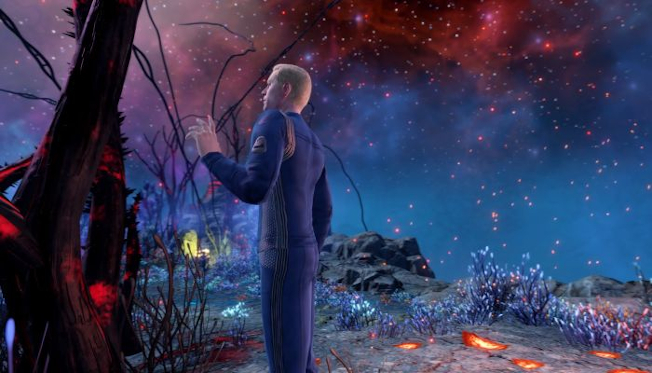
MMOB: What parts of developing Awakening were the most difficult?
AR: I would have to say the new Event System was probably the most challenging to develop. It launched first with the new Mycelial Crisis Event, but it was designed to manage all our events. Scalable and modular, it’s a system that can be configured to support all our events moving forward. And it is a very flexible system and something we are really proud of. We are very adept at making new story content, missions, Task Forces, and the like. But whenever you make something new, there are always unknown-unknowns. So you have to allocate a lot of extra time for iteration and experimentation. I think what we landed on is very slick and accessible and players are really going to enjoy it.
MMOB: What’s your favorite thing being added with Awakening?
AR: It’s always exciting to introduce a new story featuring a Star Trek Actor. Awakening is no exception. Anthony Rapp brought his A-game. You know, you can spend months building content and writing a story, you can see and hear it in your head, but you never know what it will feel like until it is all together. When the actor reads the lines the team has written, there is this moment of euphoria. Here’s an example: there is a moment in this cut scene featuring Anthony Rapp where he only says one line, but he delivers it perfectly. As it plays out, it’s heartwarming, a little melancholy, but still very joyful, and it just makes you smile. I’ll never get over how fortunate I am to work with such amazing talent.
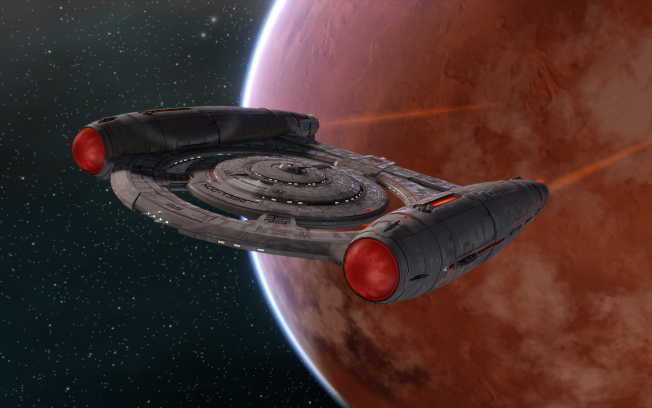
MMOB: One of the popular features of STO is how you consistently bring in members of the Star Trek cinematic family to voice their characters, and of course, you’ve kept that up with the Discovery actors, including Anthony Rapp, who plays Paul Stamets. What’s involved in bringing these actors on and what kind of process do they go through, other than the voice work, to become part of the game?
AR: That’s a good question. It’s a very long process actually. Whenever possible, we try to meet them well ahead of time, maybe at a Star Trek convention like STLV, or a CBS event. We want to put a face to the name, gauge their interest, and get them thinking about it. We want to build relationships with these actors. That’s really important. We want them to know we care about the integrity of their character and we want them to have a positive experience.
Once we know who might be interested in working with us, we start crafting a story arc. The planning can cover the next one to two years. We craft a story tailored to the character that we want to introduce. But we have to have plans B and C ready to go just in case the actor isn’t available for some reason. Once we have a story plan, then we start reaching out to the actors and then the negotiations begin. This can take quite a while for any number of reasons. The big challenge is when to reach out. Negotiations can take months, so you can’t start too late, but you also can’t start too early because development plans can change for any number of reasons, forcing us to change direction. Timing is everything.
Once we have a contract, we build the content and the scripts. If the timing works out, we have rough cut scenes to show the actor for them to review. Eventfully, they get a script and we record. We usually record remotely at a studio convenient to them. We are piped into their headset so they can hear our direction. Sometimes they opt to come and record here at Cryptic Studios. We love it when they come out because we’re all Star Trek fans and it gives us more time to give them direction. We can show them more of the game and they can get a better idea of what they are reading for. It’s been an amazing journey to get to know so many talented and wonderful actors.
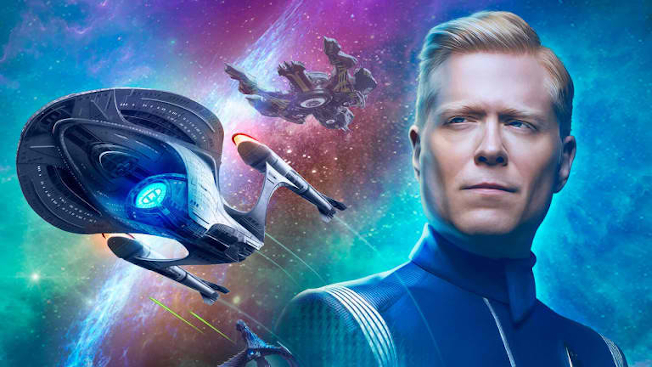
MMOB: In addition to the story content, the update contains several of the smaller patrol missions as well as a new task force operation. The game already has a lot of these, what goes into creating new ones and what measures do you take to keep them fresh?
AR: When you are running an MMO for 10 years, keeping it fresh needs to be your focus. I think we are fortunate to have a strong IP to leverage. We often use the Star Trek brand to influence what our mission, Task Force Operations (TFO), and Patrols will feel like. For instance, last year, we built the Battle at the Binary Stars. We wanted players to feel like they were really there and tried to make that as accurate a recreation as possible. Often we are not as derivative, but we still want to make an emotional connection with Star Trek.
So in the second season of Discovery, the ship and characters enter the Mycelial Network. It’s beautiful and strange and awe-inspiring. We ask ourselves, “How can we capture the essence of that? How can we turn that into a new story and new gameplay?” Our missions carry the narrative, but our TFOs and Patrols carry the backstory and support the narrative. All of it has to fulfill the fantasy of being there, so the mechanics and story need to support that goal. Asking ourselves what is special about this location, this ship, this character, or this narrative can really inspire creativity. Staying focused on fulfilling the fantasy has taken us very far in 10 years. Necessity is the mother of invention.
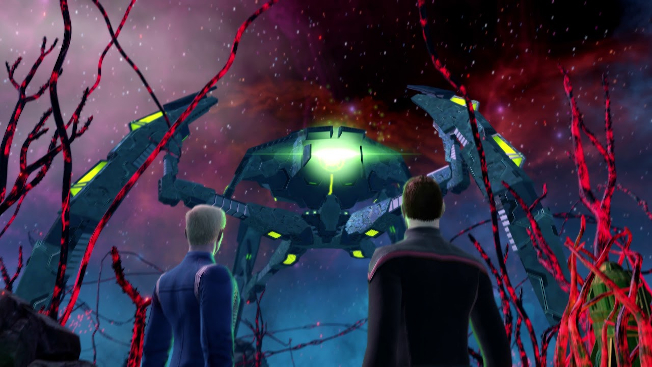
MMOB: Speaking of smaller pieces of content, STO seems to roll out quite a bit of smaller things for players to do outside of the larger updates on an extremely regular basis. How difficult is it to keep content rolling like that?
AR: It’s not difficult, it just presents different challenges. As an MMO, you want to keep people engaged as much as you can. If you go too long without new content, players may lose interest. You have to be strategic and decide how much do you need in one big release, versus how much should you spread out over smaller releases. Should you have one giant release and then go 3 or 4 months without anything? Or, should you go out with a smaller release, and drop small pieces of content every month?
It’s quite nuanced and you have to be prepared to make changes based on how your players behave. You have to listen to your player base, and you have to watch metrics and monitor player engagement. It’s also something that can change because the composition of your player base will change over time and thus expectations change. The key is to find a balance. You have to offer something consistent that meets expectations, but you also need to be prepared to take risks. All the while you have to monitor the results, and use your best judgment on how to proceed.
I don’t mean to insinuate that there are not last minute changes, but these updates are planned many months ahead of time. Changes to the release cadence are deliberate and methodical. They are strategic, not tactical decisions. Ultimately, you make a plan and schedule accordingly.
Related Articles
About the Author

QuintLyn is a long-time lover of all things video game related will happily talk about them to anyone that will listen. She began writing about games for various gaming sites a little over ten years ago and has taken on various roles in the games community.
More Stories by QuintLyn BowersRead Next
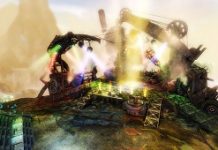
Bound By Blood is the name of the prologue to the Icebrood Saga, the continuation of the Guild Wars 2 Living Story.
You May Enjoy
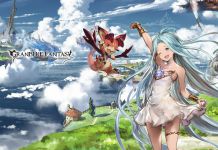
But is it too late?

It looks like players are in for a busy January.
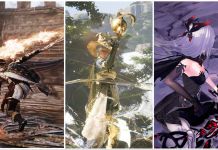
These five titles should be on the radar for any MMO fan.
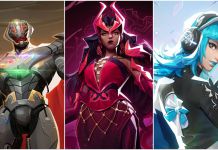
These six heroes gained the most significant balance changes as Rogue has entered the game.
Discussion (0)